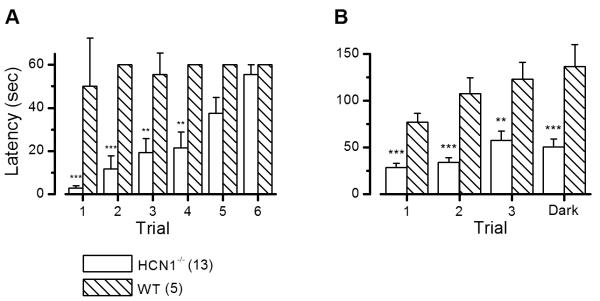Figure 8.
Rotarod performance of wild-type and Hcn1−/− mice. 18 mice (5 wild-type and 13 Hcn1−/−) were tested for balance deficits using the rotarod apparatus. Mice were tested between 1.5 and 2 months of age. A, Time to fall during training on a stationary rod. Naïve wild-type mice showed little difficulty with this task, while Hcn1-deficient mice required multiple trials before demonstrating the ability to remain on the stationary rod. B, Time spent on the rotarod apparatus accelerating at 0.1 RPM/s from a starting speed of 2RPM. Hcn1-deficient mice fell significantly earlier than wild-type controls on each of the three trials. Trial 4 indicates a dark trial in which the lights were turned off in order to limit visual compensation. Statistically significant differences are marked with asterisks.

